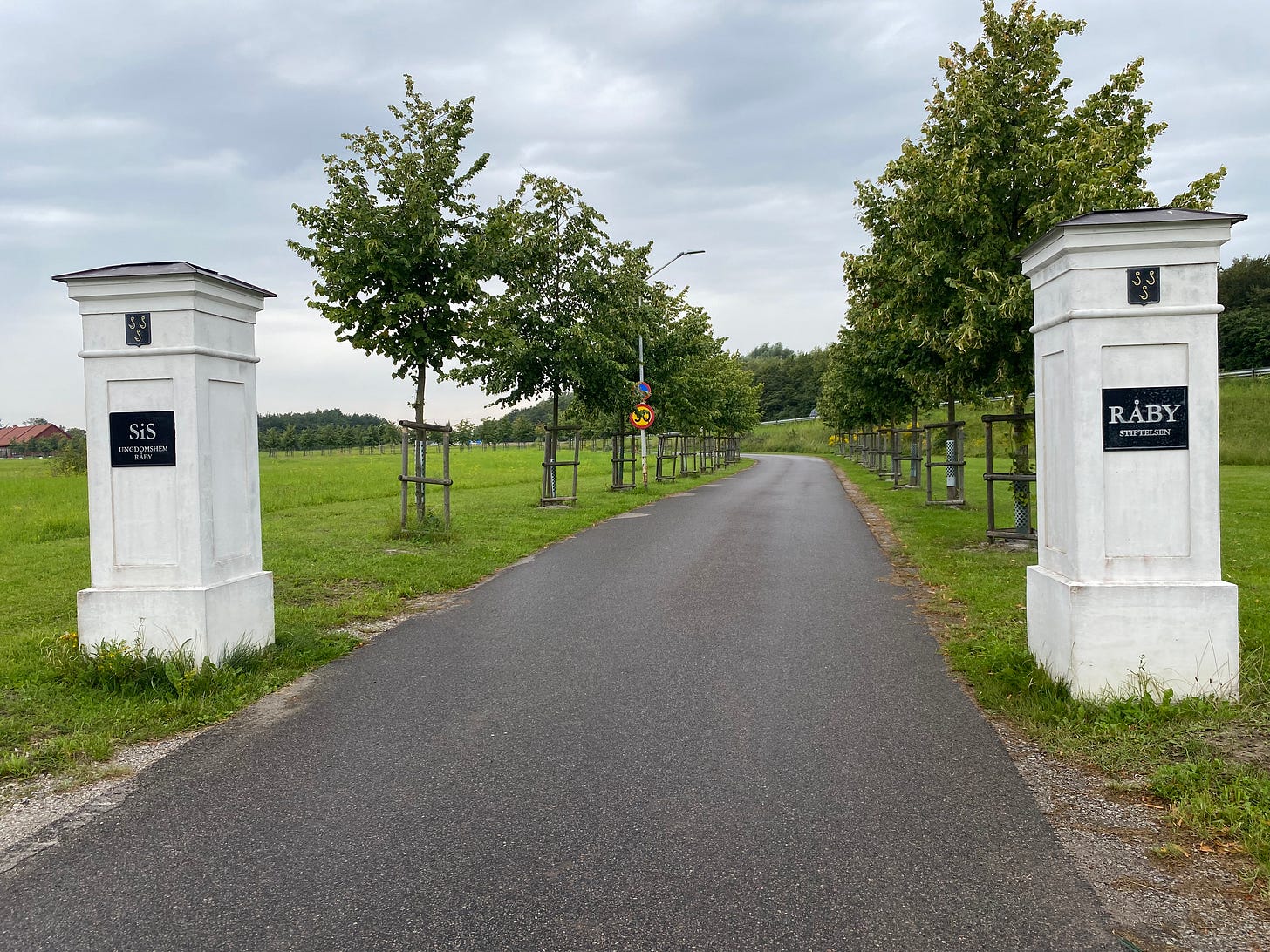
Hello everyone! This is Part 2 of a series of posts I am writing chronicling my study-abroad experiences at Lund Tekniska Högskola (LTH) in Lund, Sweden as a US exchange student. Be sure to check out the prior weeks to read other insight relating to the experience! This blog focuses on the arrival day process coming to LTH once you arrive into Copenhagen Kastrup Airport (CPH) and an account of my experiences during the Orientation Week before classes started for the semester. Enjoy!
For most US citizens entering Europe for the first time, it might be hard to figure out what exactly to do upon arriving. Usually, you have to find some sort of public or private transportation to take you from the airport to the city square and from there to the hostel or hotel where you will reside for the next few days to weeks. But when should you leave for your studies at Lund and what is there to do upon arriving? Fortunately, this blog post about the arrival day process has all the answers you will need.
Lund University has two specific days per semester that they target for students to arrive. This day, known as Arrival Day, is when mentors and advisors from the university direct you from the post-security concourse in Copenhagen Airport to the train station and onwards to Lund Central Station (Lund C) and the university campus itself. For the Fall 2023 semester, this was August 15 and for the Spring 2024 semester, it will be January 9. The specific day will be communicated to you by the international advisors in one of the post-arrival Zoom meetings and will be repeated in several emails as the day gets closer and closer. From my personal experience, it will save you a lot of trouble if you arrive into Copenhagen and Lund by Arrival Day since there will be plenty of people to ask questions to. It is fine to come a few days early if you have a family member or friend to stay with but not the best if you arrive late (you will have to figure out everything by yourself). On Arrival Day, everyone else coming into Lund for their exchange semester or start of their bachelor’s and master’s studies will be feeling the same way as you will! Even native Swedes!
So what was the process like for me?
When I arrived into the post-security concourse in Copenhagen Airport with one of the friends I met from the Swedish Embassy in Washington DC, a few Lund University mentors in blue shirts greeted us and welcomed us into the Øresund Region (another name for the greater Copenhagen area, which encompasses towns by the Øresund). They then directed us to the ticket machines for the Øresundståg train that would take us across the strait to Sweden! Mentors were available at the ticket machines to turn the language to English and to direct which buttons to click in order to get a ticket to Lund C. As I was quite tired from the overnight flight and wouldn’t have the greatest confidence navigating the machines by myself, I was grateful that the mentors were around and available to help out. They even described the train to us, which was helpful as trains are not as distinctive here as they are in the New York area. Meeting some more Americans, who came in from the West Coast, on the train was reassuring and after a ticket check and a half hour long journey going at 100 mph across Denmark and Sweden, we arrived at Lund C.
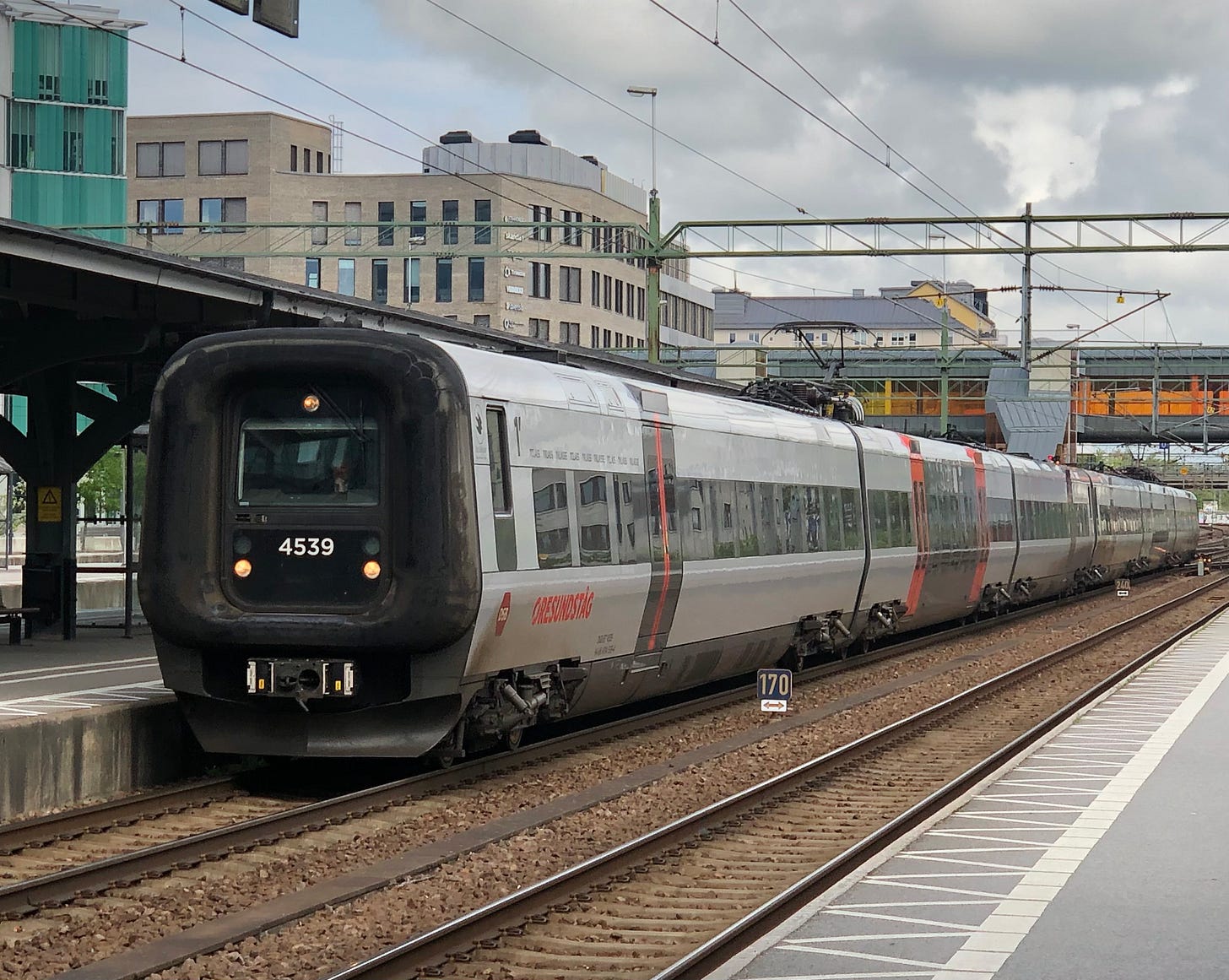
At Lund C, tons of arriving students got off the train and made a queue for the main entrance to the station. There, mentors in blue shirts guided us to a siding by a train station (off to the left of the entrance) where they took our luggage and loaded it onto a coach bus that would take us to the Arrival Day venue. The venue for the Arrival Day changes each year but it typically is a huge space on or near the university campus filled with different kiosks and amenities for new students. Typical amenities that have been offered include picking up keys from LU Accommodation in case you have received housing from them, getting Swedish SIM cards, purchasing an optional bedding package and getting one-to-one in-person discussions with the international advisors that you’ve previously talked to on Zoom. There was also an option to pay for an Arrival Day nightclub party offered by one of the guilds on campus (we will talk about extracurricular activities, including the difference between guilds and nations, in a later blog entry). I was most thankful for the opportunity to drop off my bags at the venue and walk around; I took the opportunity to talk with my assigned advisor and get information about activating my student account (a free Google account tied to the university with 30 MB of storage plus other free software).
Other than that, mentors were offering their services by driving a shuttle van to the various accommodations throughout Lund registered with LU Accommodation and AF Bostäder. A queue formed up near a parking lot, you put your luggage in the trunk of the van and it was off to the apartments! As I was unfortunately unable to get housing through these two main agencies (another later blog post), I was lucky that the mentor was able to drive me to the private housing I got through Renthia as it saved me a lot of time walking and relying on Apple Maps in new and unfamiliar surroundings.
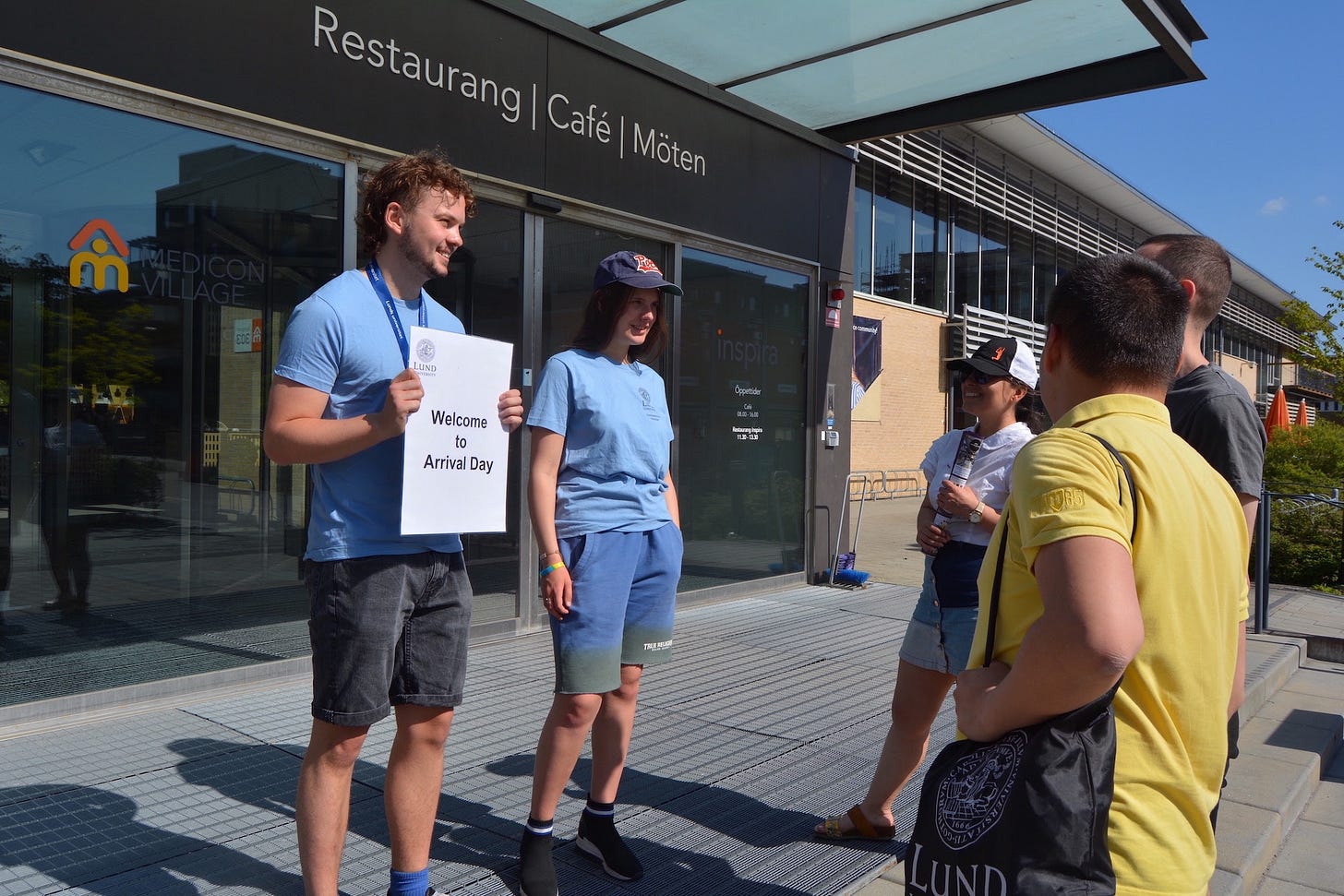
As Arrival Day is scheduled roughly 2 weeks before the start of classes, Lund University has a set of Orientation Week programming each weekday that allows students to experience Swedish life and culture. These activities are mixed between the Lund University International Desk, the university itself, mentor groups and the guilds (this latter group only applies for those enrolled at LTH). Events run by the university staff include a general information meeting, a health and well-being seminar for adjusting to life in Sweden, a library information meeting, a student association fair to learn about the many extracurriculars you can sign up for and a seminar about academic study skills. The university also offers a SUSA course (Introductory Swedish for Exchange Students) that you can take before classes start for those interested in learning the official language of the country. However, you have to indicate your interest in taking the course during the course selection process. Learning Swedish is not exactly required since Sweden is a multicultural country (this might not be immediately apparent on first glance) and English is the de facto second language of the country but it can be helpful when trying to explore the city and buy groceries as well as converse with locals and other students as they will start conversing in Swedish with you before switching to English. This fact was quite shocking to me when I first arrived! I didn’t know English would be so prevalent here!
By far the most important event during this time is the pre-registration meeting where you meet your international advisor and find others who are studying in similar concentrations. For those at LTH, you get to find your guild and get assimilated into Lund’s very social and activities-based culture. Additionally, you get a campus tour of the various buildings in your part of Lund University’s campus and get a timeslot in order to obtain your LU Card. The LU Card is your university ID card and allows you to have access to printers, computer labs, and university buildings after hours and on weekends as well as offering identification during tests and other attendance based activities. A lot of food places around Lund also offer a 10-20% discount if you show your LU card during payment.
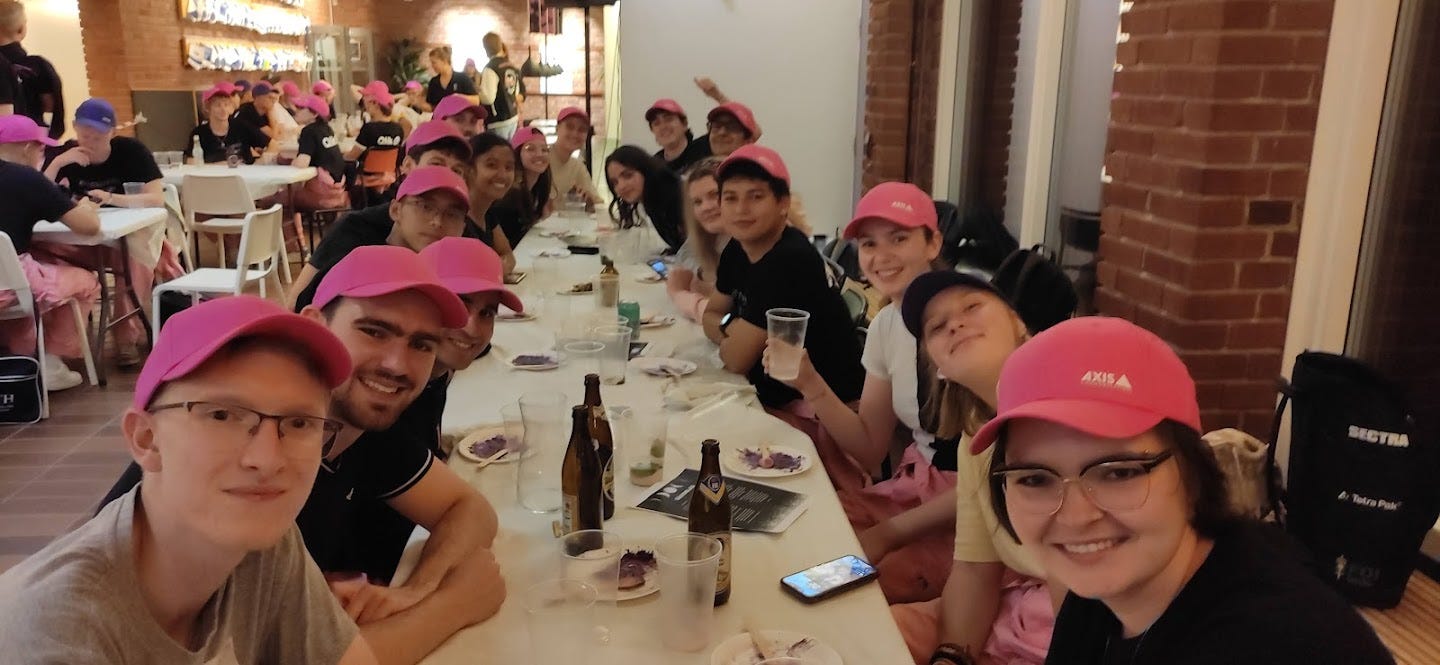
During these two weeks, it might be seem overwhelming with so many activities to participate in. As a computer science and business student at LTH, I was selected into the D-Guild and the guild offered scavenger hunts, trust activities, sports, dinner parties (sittnings), musical acts and plays (spex), dance afterparties, pre-parties and city tours nearly every day. Some of the nations, similar to fraternities, also offered triweekly activities during the Orientation Weeks to get new students to sign-up for their nation during the inskrivning (sign-up period) and the Lund University International Desk offered board game nights, hikes to Swedish natural parks and monuments, pride parades and special dinners with unique Swedish food during the weekends. The most important thing to remember is that you do not have to participate in everything. Pick and choose the activities that you are most interested in. It is tough to walk the thin line between becoming bored and participating in so much that you have no time for yourself. I had a lot of trouble being dragged into activities from 2 PM to 11 PM certain days during the Orientation Week feeling that I had no time to relax and settle in to my apartment and new surroundings. I don’t regret participating in these daily activities at the start of the semester and feeling stretched to the brim with learning about Swedish culture but one thing I will say is that don’t forget to do your own thing. Once I dropped my bags off at the Arrival Day venue, I spent about 2 hours exploring Lund walking around on various bike paths. It was quite enjoyable! I got to see the raw nature and beauty of Lund with its grassy fields, playgrounds in the shape of castles, trains going high speed across town and wild horses and sheep walking on the outskirts of town! I also snagged by the gas station and got classic Swedish snacks like a Daim chocolate bar, a Wasa cheese sandwich and a scratch ticket, from which I won a free coffee.
Overall, my favorite activities that I participated in during the Orientation Weeks were from the nations and from the Lund University International Desk. The International Desk had a few notable events that I enjoyed: one was a board game night with provided fika (coffee and sweets) where I played Ticket To Ride Europe for the first time and the other was a Swedish dinner where I tried ärtsoppa (yellow split pea soup) and pancakes (more similar to a crepe), meatballs with lingonberry jam, rotmos (root vegetable mash of turnips, potatoes and carrots - the best thing at the dinner), knäckebröd (crispbread) with salmon and fish roe, chokladbollar (chocolate coconut oatmeal balls), black currant juice and hallongrotta (raspberry cave cookies) for the first time. As for nations, Helsingkrona Nation invited me to a movie night with a free seeing of Mamma Mia! with freshly baked desserts (best brownie ever) and Kalmar Nation invited me to a hike in Falsterbo in the nature preserve of Flommen, the southwestern point in all of Sweden. Sydskånska Nation also invited me to a movie night watching Fantastic Mr. Fox with freshly baked pizza. However, I also did my own thing by temporarily joining a track team with IFK Lund and doing track workouts with them in the track near Lund C for a few months and temporarily joining the Lund Rowing Club and attempting to convert my indoor rowing skills to rowing on an actual rowboat in the rivers and lakes of Malmö.
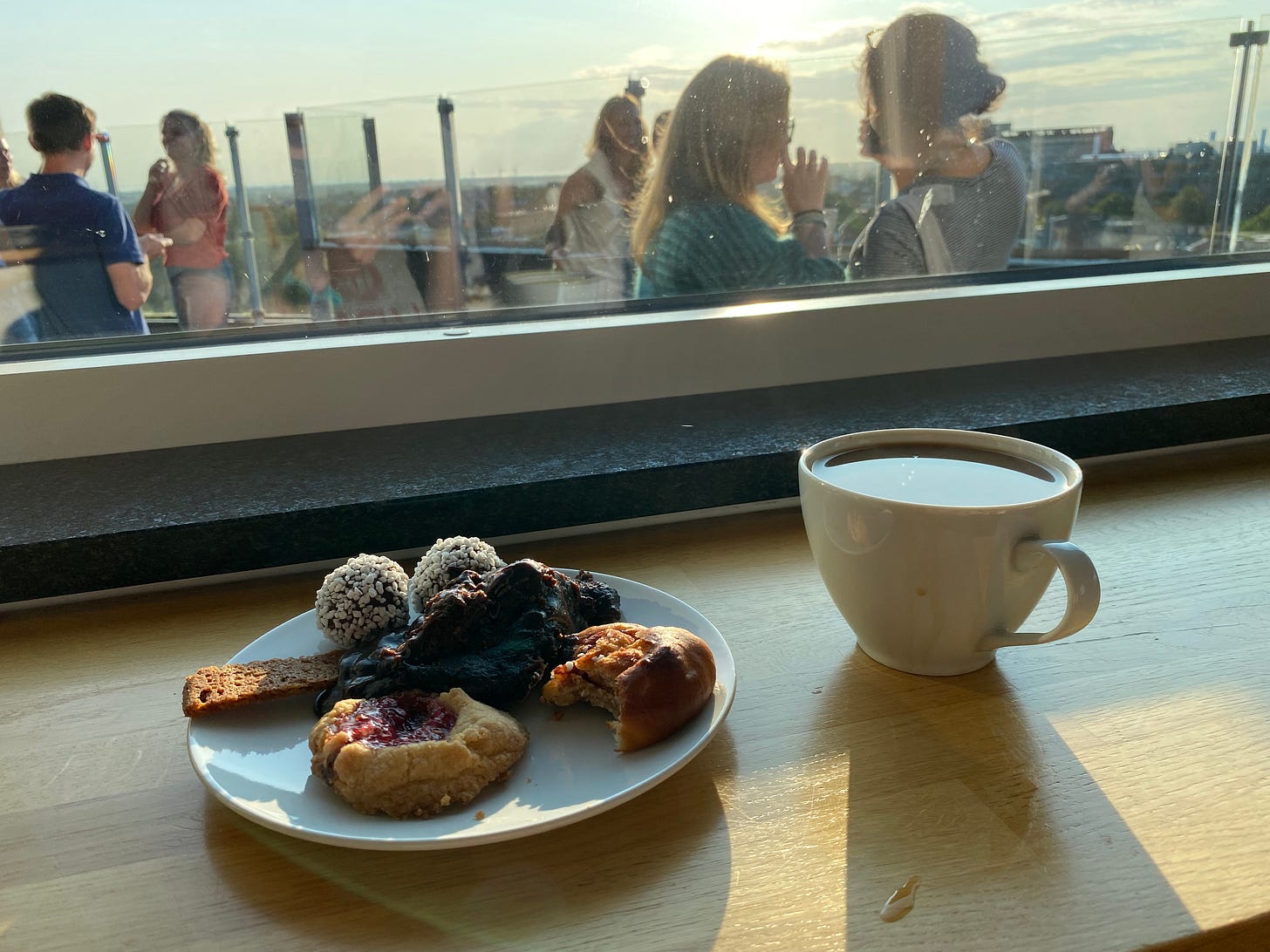
Overall, the Orientation Week period during the start of the semester is a pretty hectic one with all sorts of activities that you can do for free or pay a small price for. The events start to lessen once classes start to kick in for the semester but it was nice to get out of my comfort zone for a change and not spend the 2 weeks before classes struggling with the language, geography and knowhow of the city. A few weeks later and you’ll already have a routine to follow for the weekdays with your favorite nations to join, cool guild events to participate in and epic places to travel to from the main train station. And if I am writing this in December and feel like I’ve gotten used to Lund, then you can too.
In the next post, I’ll talk about the precarious housing situation at Lund University. It is, in my opinion, a must-read.
I look forward to hearing your stories during the Orientation Week or answering questions about the arrival day experience so feel free to leave a comment or email me if you want to share. If not, I will see you in the next blog post.
— Michael Batavia
